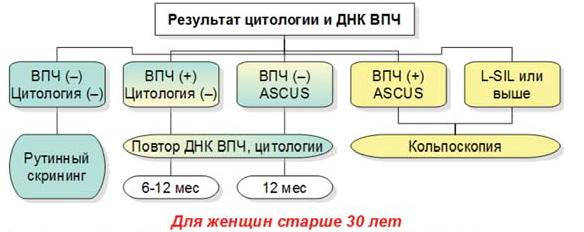Testicular tumor: symptoms, treatment

Testicular tumor can be both malignant and benign. A malignant tumor that develops from the tissues of the male reproductive glands that are located in the scrotum( testicles) is called testicular cancer. Young men of 20-30 years belong to the group of high risk, especially if in childhood they suffered from testicle non-admission( cryptorchidism).
Testicular tumor, symptoms, treatment depends on what kind of diagnosis you put the doctor. Classification of the testicular tumor, as in other forms of malignant neoplasms, is based on the stages of the disease, as well as the presence of lesions of retroperitoneal lymph nodes and other organs( for example, the liver and lungs) with metastases. If a patient does not show signs of metastasis, he is diagnosed with stage I cancer if retroperitoneal lymph nodes are affected, stage II, if the mediastinal lymph nodes are affected, stage III.In addition to the stages of cancer, there are four varieties of it: teratoma, seminoma, choriocarcinoma and embryonic carcinoma. There is also a classification of testicular tumors, which includes the following three sections: gonadal stromal tumors, non-immunogenic tumors and other tumors. Most often, men have germinogenic tumors, which include seminoma, choriocarcinoma, fetal carcinoma, yolk sac tumor, mixed tumors and teratoma. These tumors are formed from the ducts through which spermatozoa enter the cells. The most common of these tumors is the seminoma.
Symptoms of a testicle tumor.
Testicular cancer can not always be determined by its manifestations( they are not always there), but usually it is accompanied by a testicle tumor, which is the first symptom of cancer. By the way, the tumor can be both painful and painless. Other symptoms of cancer include an increase in the testicle, its compaction and pain in the lower abdomen or scrotum. With cancer metastases, pain in the corresponding areas manifests more often( for example, lung metastases show chest pain, coughing, shortness of breath and hemoptysis, with metastases in the vertebra, pains in the back region).
Testicular tumor symptoms do not always have. Some types of testicular cancer( choriocarcinoma, sertolioma and leidigoma) are accompanied by increased production of hormones( estrogens, hCG( chorionic gonadotropin) and testosterone).Increasing the level of estrogen can lead to a decrease in sexual desire, an increase in the level of HGT - to augmentation of the breast( gynecomastia), and an increase in the level of testosterone - to premature ripening in boys, manifested by the growth of hair on the body and face.
The tumor itself most often does not cause painful sensations, but they appear when the cancer passes to the seminal cord, in which the nerves are. Later the testicle becomes denser and deforms, the boundary between the epididymis and the testicle disappears, the fluid accumulates between the testicles.
In 3% of cases, cancer develops in both testes at once( this is the same tumor, most often), but a tumor can appear even after several years on one side.
Therefore, the first symptom of cancer, which should induce a doctor, is the presence in the scrotum of tumors that are detected accidentally, usually. Because neoplasms are often painless, our men rarely consult a doctor about this problem, but one should take care of oneself and not neglect health problems.
Remember that in 10% of cases, the first manifestations of cancer are associated with the appearance of metastases, which can cause other health problems( for example, hydronephrosis, pyelonephritis, cough, shortness of breath, mental changes, neurologic disorder, pain syndrome, respiratory failure andeven fractures).
Diagnosis of testicular tumor.
Diagnosis of tumors is based on certain clinical data: examination of the patient, probing the scrotum and other areas of tumor metastasis. In addition, the doctor must conduct an ultrasound examination of all organs of the abdominal cavity to exclude or confirm the presence in the internal organs and lymph nodes of the abdominal cavity of metastases. The ultrasound of the testis itself, which allows you to determine the relationship with other formations of the scrotal tumor. A doctor can perform a chest radiograph to exclude or confirm the presence of metastases in the lungs. If the knot appears firm to the physician( especially if the knot is on the testicle), he can perform a biopsy and take a small portion of the tissue for examination under a microscope under local anesthesia.
To diagnose testicular tumors also requires a blood test for tumor markers( protein substances that appear when tumor development): Analysis for AFP( alpha-fetoprotein), lactate dehydrogenase and beta-subunit of human chorionic gonadotropin. If there is an elevated level in the blood of these substances, a person can have testicular cancer. After curing, these tests are also used to promptly detect possible relapse and control of the tumor.
Treatment of testicular tumor.
Tumor testicle, treatment depends on the stage of their development. For example, the diagnosis "cancer the first step" is made to delete the infected eggs and exposure of the iliac and retroperitoneal lymph nodes( this is possible only if the metastasis have not spread to the lymph nodes).If the patient decides on such treatment, he will be able to live for at least 5 more years( in 95%).In cancer
second stage, when struck lymph nodes metastasis but are smaller than 5 cm, it is also necessary to carry out the removal of the eggs and the further exposure of the iliac and retroperitoneal lymph nodes. In this case 90% of patients live even more than 5 years.
Cancer of the third stage requires both radiation and surgical treatment, but also chemotherapy( it includes cisplatin).With such treatment, 90% of patients have a five-year survival rate.
The fourth stage of cancer also requires a combined treatment, which will necessarily lead to success( always have to hope for the best).
seminoma also treated by orchiectomy( surgery to remove the egg), and if still struck and lymph nodes - with chemotherapy and surgery with the removal of retroperitoneal lymph nodes.



